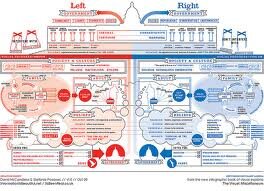 I love this Venn diagram by xkcd. It was projected on the wall at the start of a Future M seminar I attended this September called “Beyond the University Website – The Future of Digital Marketing in Higher Education.” This image keeps coming back to me, in content decisions for both edu and B2B.Sponsored by ISITE Design, and moderated by chief strategy officer Jeff Cram, the panel included Mike Petroff, Web and Technology Enrollment Manager at Emerson College; Perry Hewitt, Chief Digital Officer at Harvard; Gene Begin, Digital Marketing Director at Babson College; and Tom Baird, Vice Chancellor of University of Michigan Dearborn.
I love this Venn diagram by xkcd. It was projected on the wall at the start of a Future M seminar I attended this September called “Beyond the University Website – The Future of Digital Marketing in Higher Education.” This image keeps coming back to me, in content decisions for both edu and B2B.Sponsored by ISITE Design, and moderated by chief strategy officer Jeff Cram, the panel included Mike Petroff, Web and Technology Enrollment Manager at Emerson College; Perry Hewitt, Chief Digital Officer at Harvard; Gene Begin, Digital Marketing Director at Babson College; and Tom Baird, Vice Chancellor of University of Michigan Dearborn.
Content Overload? It's all about balance.
I’ve been working on content strategy, optimization, writing and editing for an independent preK-8 school website this year and am about to begin on one for an independent high school. Funny how, regardless of the size of the school, the home page issues always seem to be the same.
How to balance content for current vs. prospective students and constituents? How many news feeds, blog feeds, photo and video galleries do you really need? How can we make sure it's all optimized for search? What is the true purpose of the home page anyway? How much is too much?
I'm knee-deep in content migration from one CMS to another on the above mentioned website, but once I come up for air I'll grapple with this question some more. Got any formulas for success? Would love to hear them.
FutureM wrap-ups:
Here are a couple good summaries of the FutureM seminar, along with some choice tweets on CMS quandries (as universal as the homepage ones, it seems to me), mobile stats for edu, and the need for social strategy:Open Parenthesis: Future M on Higher Educationpost by John Eckman of ISTEInside FutureM: Digital Marketing and Higher Educationpost by Erik Devaney on New England Post





